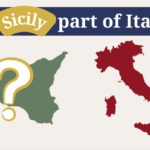The kufi is more than just a piece of headwear; it’s a rich tapestry woven with history, culture, and spirituality. This simple cap has adorned the heads of millions across various cultures for centuries, serving as both a fashion statement and a symbol of faith. From bustling city streets to quiet prayer halls, the kufi carries profound meaning that transcends borders. Whether you’re familiar with its significance or new to this traditional garment, exploring the world of the kufi opens up fascinating insights into its origins and cultural importance. Join us on this journey as we delve into what makes the kufi an enduring emblem in many communities around the globe.
A Brief History of the Kufi
The kufi has roots that trace back centuries, emerging in various cultures across Africa and the Middle East. Traditionally associated with Islamic attire, it symbolizes piety and respect.
Historical records suggest that this headwear became popular among Muslim men during the early medieval period. It was often worn during prayers or significant religious occasions.
Various regions have adapted the kufi style to reflect their cultural identities. For instance, in West Africa, bright colors and intricate patterns are common. In contrast, simpler designs are favored in North African countries.
As trade routes expanded, so did the kufi’s influence beyond its initial borders. Today, it remains a cherished item for many communities worldwide while still honoring its historical significance within Islam.
The Meaning and Symbolism of the Kufi
The kufi carries deep meaning and rich symbolism that resonates across cultures. Traditionally, it signifies piety and respect, especially within Islamic communities. Wearing a kufi during prayer or religious gatherings underscores one’s devotion to faith.
Beyond religion, the kufi also represents cultural heritage. Many people wear it as an expression of identity. Its intricate designs may reflect regional artistry or personal stories passed down through generations.
In various contexts, the kufi serves as a reminder of humility and connection to one’s roots. It embodies values such as community, spirituality, and tradition.
For many individuals, donning a kufi invokes feelings of belonging and pride in their ancestry while fostering unity among diverse groups who share similar beliefs or customs. This headwear stands not just as an accessory but a powerful symbol that transcends mere fabric.
Different Styles and Variations of the Kufi Across Cultures
The kufi showcases an array of styles and variations that reflect diverse cultures around the globe. In West Africa, for instance, you’ll find vibrantly colored designs adorned with intricate embroidery. These styles often represent regional identities and individual artistry.
In contrast, the South Asian version tends to be simpler in design but equally significant. Known as a topi or pagri in some areas, it is usually made from cotton or silk and worn during religious ceremonies or daily prayers.
Middle Eastern versions can vary widely; they may feature patterns that signify tribal affiliations or heritage. The materials used also differ—some are crafted from wool while others incorporate more luxurious fabrics.
Each style carries its own weight of significance and function within various communities, making the kufi not just a piece of clothing but a symbol woven into cultural narratives.
How the Kufi Is Worn and its Importance in Various Religious Practices
The kufi is often worn as a symbol of faith and respect in many religious communities. In Islamic culture, it signifies devotion to God. Men frequently wear it during prayers, especially on Fridays and special occasions.
Its placement on the head can vary slightly among cultures but generally sits comfortably atop the skull. The act of wearing a kufi is deeply personal; it reflects one’s commitment to spirituality.
In some African traditions, the kufi represents heritage and pride. It’s more than just an accessory; it’s woven into ceremonies and rites of passage.
The colors and designs may also hold significance, with certain patterns linked to specific identities or regions. By donning a kufi, individuals participate in a rich tapestry of history that connects them to their roots while expressing their beliefs.
The Evolution of the Kufi in Modern Times
The kufi has evolved significantly in modern times, transcending its traditional roots. Once primarily worn during religious ceremonies or prayers, it has found a place in daily fashion for many.
Today, you’ll spot the kufi adorned with vibrant colors and intricate designs. Young people often incorporate this headwear into their outfits as a statement of cultural pride. Social media platforms have played a pivotal role in popularizing various styles.
Fashion designers are also embracing the kufi, blending traditional elements with contemporary flair. This fusion not only celebrates heritage but also invites new generations to explore their identity through fashion.
Moreover, the kufi serves as a symbol of unity among diverse Muslim communities worldwide. It connects individuals across cultures while adapting to modern sensibilities, showcasing its enduring significance through time.
Conclusion: Embracing the Cultural Significance of the Kufi Today
The kufi holds a unique place in the tapestry of cultural identity and religious expression. This traditional headwear has transcended generations, adapting to various styles while remaining rooted in its rich history. Wearing a kufi is not merely about fashion; it’s an embodiment of faith, respect, and heritage.
Today, as we see a resurgence in interest for traditional attire across many communities, the kufi stands out as a symbol of unity among diverse cultures. Whether worn during prayer or as part of everyday life, it continues to signify more than just fabric—it represents community bonds and shared beliefs.
Embracing the significance of the kufi today allows us to honor our past while fostering understanding between different cultures. As this beautiful headwear evolves further into contemporary times, its essence remains steadfast—a reminder that our identities are intricately woven with respect for tradition and each other.


